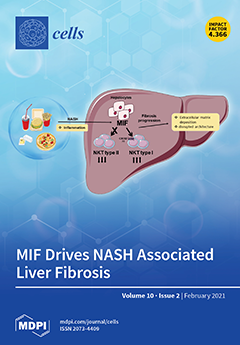(1) Background: It is known that sickle cells contain a higher amount of Ca
2+ compared to healthy red blood cells (RBCs). The increased Ca
2+ is associated with the most severe symptom of sickle cell disease (SCD), the vaso-occlusive crisis (VOC). The
[...] Read more.
(1) Background: It is known that sickle cells contain a higher amount of Ca
2+ compared to healthy red blood cells (RBCs). The increased Ca
2+ is associated with the most severe symptom of sickle cell disease (SCD), the vaso-occlusive crisis (VOC). The Ca
2+ entry pathway received the name of P
sickle but its molecular identity remains only partly resolved. We aimed to map the involved Ca
2+ signaling to provide putative pharmacological targets for treatment. (2) Methods: The main technique applied was Ca
2+ imaging of RBCs from healthy donors, SCD patients and a number of transgenic mouse models in comparison to wild-type mice. Life-cell Ca
2+ imaging was applied to monitor responses to pharmacological targeting of the elements of signaling cascades. Infection as a trigger of VOC was imitated by stimulation of RBCs with lysophosphatidic acid (LPA). These measurements were complemented with biochemical assays. (3) Results: Ca
2+ entry into SCD RBCs in response to LPA stimulation exceeded that of healthy donors. LPA receptor 4 levels were increased in SCD RBCs. Their activation was followed by the activation of G
i protein, which in turn triggered opening of TRPC6 and Ca
V2.1 channels via a protein kinase Cα and a MAP kinase pathway, respectively. (4) Conclusions: We found a new Ca
2+ signaling cascade that is increased in SCD patients and identified new pharmacological targets that might be promising in addressing the most severe symptom of SCD, the VOC.
Full article






